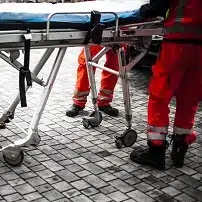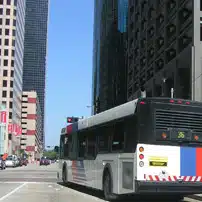Soon after Halloween, the clocks need to be turned back to end daylight saving time (DST). This year, the time change will happen in the early morning hours of Sunday, Nov. 7.
For drivers, the end of DST means that the common commuting hour of 5:00 to 6:00 p.m. will be in darkness. Also, the commute into work and school is more likely to involve sun glare. All of this can create dangerous conditions for drivers.
Even though DST is not a popular tradition, it will likely continue in Delaware until many other states eliminate the time change. Since it will be happening in most of the United States, there is something far more serious for people to keep in mind. Drivers are more likely to get in car accidents for about two weeks following the time shift. AAA Mid-Atlantic said the increase in accidents in Nov. results from disrupted sleep patterns, even if an hour of sleep is gained.
Pedestrians are also vulnerable during the end of DST, specifically between the hours of 5:00 and 6:00 p.m., according to the American Automobile Association (AAA).
Driving in Morning Glare, Going Home in Darkness
The morning commute comes with sun glare when the clocks fall back, making it difficult to see the road ahead. With the end of DST, the evening commute time of 5:00 to 6:00 p.m. is now in darkness. The week before, people were driving in more light during this time, even if it was fading. In essence, drivers are coming across visual challenges on both ends of the commute.
Morning glare causes accidents, but crashes are far more likely to occur at night than any other time of the day. Despite 60 percent less traffic on the roads at night, more than 40 percent of all car accidents occur at night, according to the National Highway Traffic Safety Administration (NHTSA).
It takes time to adjust to the time shift. Sleep experts advise that you should expect to take at least a week or so to adapt to the time change. At first, people tend to become drowsy when it is dark outside, and that is another thing to keep in mind while traveling during your evening commute. Drowsy driving, similar to drunk driving, means inattention and reduced reaction time, according to the AAA.
Besides darkness coming early, adjusting sleep to your new sleep schedule can make you feel more agitated. Agitation can lead to aggression. On the road, you may also see more aggressive driving behaviors, such as speeding and tailgating.
There are biological reasons for irritability, too. The circadian rhythm, which controls the release of mood, appetite, and sleep hormones, will be thrown off, even when the time change is just one hour. That shift in the circadian rhythm can lead to headaches and other adverse side effects.
How Can I Prevent an Accident Following the End of DST?
The AAA has a few tips that drivers can follow at the end of DST and throughout November and the winter months:
- Follow a safe driving distance so you can react to changes in the road. This is something that drivers should do all the time, but it is more important when visibility is reduced, which may be true for both the evening and morning commuters.
- Slow down at crosswalks and intersections, and anticipate that pedestrians may cross mid-block. Like drivers, pedestrians and cyclists are adjusting to the shorter daylight, and accidents can happen very easily. Jaywalking may be frowned upon and a finable offense, but it is common.
- Adjust speed to compensate for low-light conditions. Driving slower helps drivers adjust to the reduced visibility on the road.
- Maintain vehicles so that your headlights, taillights, and signals work properly. Replace worn wiper blades so you are not stuck with non-working wipers in a rainstorm, and refill fluid reservoirs.
- Clean and maintain windshields, windows, and mirrors. A dirty or damaged surface that drivers rely on for gauging traffic and the road ahead can distort their view.
- Avoid two-lane highways if possible. The visual glare of traffic from the opposite side of the road can be blinding. In addition, with lower visibility, two-lane highways tend to have more curves and turns.
- Use high-beams when visibility is low. High-beams can be blinding for the other drivers, but if used on an empty, poorly-lit road, it allows the motorist to see the road ahead. Low-beams will allow the driver to see about 160 feet in front of their vehicle, high-beams will allow the driver to see up to 500 feet away.
- Check the lighting inside the car and adjust it to the changing outside conditions. Visibility will be challenged, and bright lighting inside the car may further compromise the vision of the driver.
- Avoid distractions. Put down the cellphone, and set up your music playlist or radio station ahead of your journey. Avoid eating, drinking, and checking the passengers in the seats behind you while driving.
For pedestrians and cyclists:
- Wear reflective gear at night.
- Walk against traffic, but bicycle with traffic.
- Cross at corners, not in mid-block. Not only are drivers more likely to be on the lookout at corners, they are legally required to stop at crosswalks.
Wilmington Car Accident Lawyers at Rhoades & Morrow Can Help You After a Drowsy Driving Collision
There will likely be an uptick in car accidents in the weeks following the end of DST. You should prepare for the time change, but you cannot guarantee that other drivers will do the same. If you were injured by a drowsy driver, contact our Wilmington car accident lawyers at Rhoades & Morrow. Complete our online form or call us at (302) 427-9500 to schedule a free consultation. Located in Wilmington, Bear, and Milford, Delaware, we serve clients throughout Middletown, Dover, Milford, Lewes, Rehoboth, Elsmere, and Seaford.





